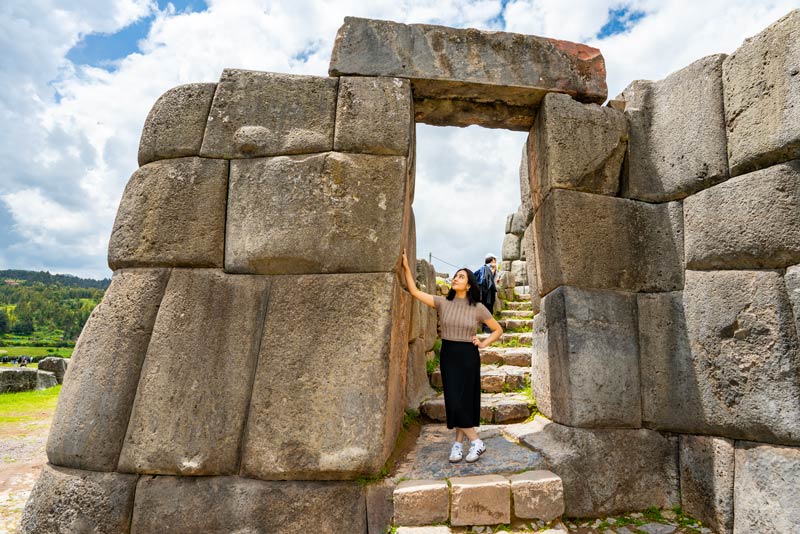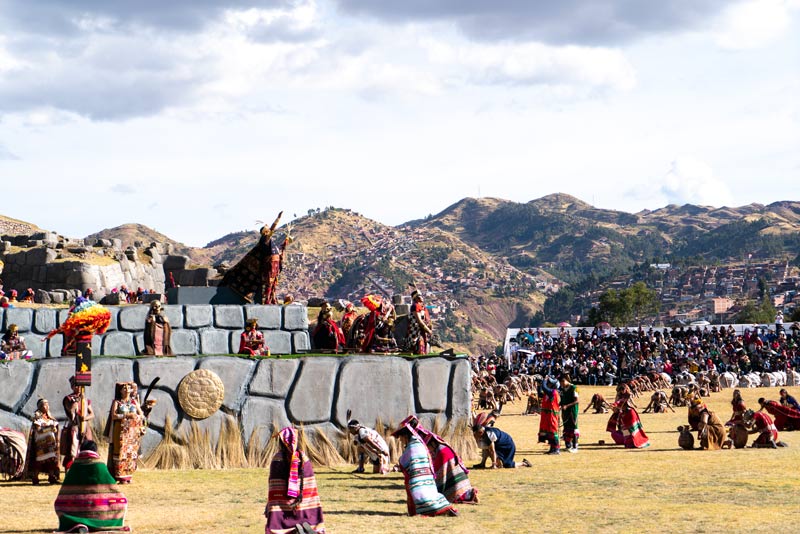The relationship of the Incas with nature
For the Incas, nature was not just a resource; it was a living being capable of bringing prosperity to an entire people. This culture therefore had a profound gratitude for the earth, offering it in return through rituals and offerings. Discover all the aspects of Inca life that had a direct correlation with nature and how they venerated and respected it.
- Nature for the Incas
- The Andean Worldview
- Rituals and offerings
- Tips and recommendations
- Frequently Asked Questions
Nature for the Incas
Nature was a deity for the Incas, specifically the earth, represented by Pachamama (Mother Earth), who was capable of bringing prosperity to their empire through agriculture. This was a sacred spirit that permeated every living being, so caring for and preserving them would have a direct relationship with the abundance and good fortune of the Tahuantinsuyu.
Another reflection of the importance of nature in Inca culture was that their main deities were material beings found within the Inca culture. An example is the Sun, their main deity, which provided light, energy, fire, and heat. On a larger scale, it supported agriculture and provided guidance, and was even seen as a source of life.
Other natural deities for the Incas were the Moon (Mama Quilla), thunder and storm (Illapa), water (Mama Qocha), among many animals such as the condor (representing the world of the heavens), the puma (representing the earthly world) and the snake (representing the inner world).
| Earth (Pacha) | Symbolic representation | Main features | Importance |
|---|---|---|---|
| Hanan Pacha (World above) | Condor, Sun (Inti), Moon (Quilla), stars. | Celestial kingdom inhabited by gods such as the sun, Mama Quilla, Illapa and ancestors. | Source of rain, light, and vital energies. It is also the dwelling place of divine entities and ancestors. |
| Kay Pacha (Earthly World) | Puma, Pachamama, human beings, flora and fauna. | Middle ground, home of the living, agriculture, animals and everyday life. | Space for human action and balance between the other two worlds. |
| Uku Pacha (Inner World) | Snake (Amaru), caves, fertility, seeds. | World of transformation, fertility, death and rebirth. | Place of gestation and rebirth. |
The Andean Worldview
A worldview is how we understand the world and our place or meaning in it. For the Andean culture, to which the Incas belonged, it was a way of coexisting with nature and everything around them in harmony, living in a mutually beneficial relationship. This worldview was connected to every aspect of their lives. Discover the most significant ones:
Inca Architecture
When we visit the main Inca citadels, we will understand the relationship between architecture and its fusion with nature. These two structures are present in harmony in every construction, and not only that, but many of these buildings were intended solely as temples of worship to Inca gods, that is, they borrowed a place in nature to create a sanctuary in their honor.
Representative works of this connection with nature are the Temple of the Sun, the Temple of the Moon, the Temple of the Condor, and other ceremonial sites, many of which not only worshipped deities but were also aligned with the solar, lunar, and stellar cycles.
Sacred Agriculture
Inca agriculture had a deep-rooted, sacred spiritual significance. It was characterized not only by its advanced nature but also by the close relationship with the earth (Pachamama) that was maintained through its agricultural terraces and irrigation canals. Sowing was practically a ritual act, a form of reciprocity with the land that nourishes them.
Many of their rituals are intended to offer tributes to the earth so that it may become more fertile and thus bring prosperity. For the Inca culture, farming was not just about producing; it was a kind of dialogue with the land that maintained balance and harmony.
The Apus
Mountains, or sacred spirits, were very important to the Incas. They were called Apus, and they were the protectors and guardians of their territory. From their heights, they could influence the climate, water, and life.
The Apus were asked for protection, fertility, and balance in ceremonies such as the offering to the earth. Among the most important ones found in Cusco are the Ausangate, the Salkantay, and the Huanacaure. The apus, or sacred mountains, were also viewed as their ancestors, and their fervor was even greater, as they felt honored to inhabit the lands under their protection.
The Huacas
The huacas were natural points of sacred energy , their manifestation was generally given in immense rocks, which in the Inca worldview were seen as entities that lay from a long time ago and that possess a great energetic charge for everything they saw in their life.
These huacas were objects of veneration where sacred spirits and gods manifested. They were very important in Inca constructions, and at least one of them always existed, giving their buildings even greater significance, as they were protected by them.
The Inca as the Representative of the Sun on Earth
The Inca was not only the emperor of Tahuantinsuyu, but was also considered the son of the Sun and its representative on Earth. Therefore, his value transcended to such an extent that being in his presence was like seeing a deity, or at least, a person who could have a direct relationship with the sacred spirits of the gods such as the Sun (Inti) or the Earth (Pachamama).
Rituals and offerings
To venerate nature in Andean culture, many rituals were held, offering tributes and even sacrifices so that the gods and sacred spirits would understand the benevolence of an entire people. Even today, many of these Inca religious ceremonies are still practiced, lending even greater value to the knowledge that has transcended pre-Inca cultures.
Inti Raymi
One of the greatest ritualistic celebrations for the gods of nature is Inti Raymi, a festival honoring the Sun God, the Apus, and Mother Earth. Through sacrifices, tributes, and offerings of agricultural and artisanal products, we offer reciprocity to the earth and the sun for a prosperous season.
This festival took place every year and is still celebrated today in the form of a representation. It was the greatest ceremony of the Inca culture, where each god was honored and thanked for having brought good fortune to the Tahuantinsuyu empire.
Payment to the Earth
This is one of the most enduring rituals in Andean culture. In paying homage to the earth, one offers tributes and offerings to Pachamama so that she may bless the person who does so, as well as the land where they are buried.
This offering usually includes coca leaves, chicha, corn, wool, fat, food, and formerly, along with some sacrifice.
Challa
Challa is a small offering of reciprocity to the earth for providing you with food. In this ritual, the person pours a little of their drink onto the earth before drinking it or beginning any activity. Challa is still popular today and is one of the most popular rituals in Andean culture, where it demonstrates benevolence toward Pachamama.
Kintu
In this ritual, the coca leaf takes center stage. Three leaves are chosen and joined together as a symbol of the triad of the Inca worldview. It represents Hanan Pacha (upper world), Kay Pacha (earthly world), and Uku Pacha (inner world). This offering is usually left under stones, in small holes in rocks, or on altars and sacred shrines.
Tips and recommendations
- When visiting Cusco, we’ll find many places where we’ll learn much more about Andean culture and how many traditions of living in harmony with nature are still preserved in some places.
- If you’re traveling to Cusco, remember to acclimatize during the first few days to avoid altitude sickness and fully enjoy your experience.
- In each of Cusco’s archaeological sites, we can find temples or buildings dedicated to their deities, giving us a better understanding of their worldview.
- If you plan to visit Cusco during the rainy season (November–March), be prepared with waterproof clothing or a rain poncho, as the weather can change at any time.
- When visiting Cusco during the dry season (April to October), we will find better scenery in clear weather, although there are usually more visitors.
- Remember to preserve nature, just as Andean culture does. It’s a way of living in harmony, conscious of its importance and value.
- During all your trips around Cusco, remember to stay hydrated to avoid any altitude sickness.
- Enjoy each of Cusco’s landscapes at a leisurely pace; its geography will allow you to have a space of introspection and calm.
- Part of the Andean tradition is to thank Pachamama for your travel experience, so you can enjoy each journey with greater meaning and value.
- Remember that you can book many travel experiences in Cusco alongside Boletomachu Picchu. Ask our advisors about your options.
Frequently Asked Questions
1) Why was nature so important to the Incas?
Because nature was considered a sacred living being that brought them prosperity. It was the source of everything necessary for life and therefore should be venerated and cared for.
2) What was Pachamama in the Inca worldview?
Pachamama, or Mother Earth, was a deity who provided fertility and life. Her energy sustained agriculture, and therefore she received offerings through rituals.
3) What is the Andean worldview?
It is the way in which Andean peoples understood their relationship with the universe. It was based on reciprocity, balance, and harmony with nature.
4) What were the three worlds of the Inca worldview?
The Hanan Pacha (upper world), the Kay Pacha (earthly world) and the Uku Pacha (inner world).
5) What animals symbolized these three worlds?
The condor represented Hanan Pacha, the puma represented Kay Pacha, and the serpent represented Uku Pacha. These animals were spiritual guides and messengers between dimensions.
6) What role did the Apus have for the Incas?
The Apus were sacred mountains and were considered protectors of the people and providers of water, climate and fertility.
7) What were the huacas?
Huacas were places or natural formations with spiritual energy. They were worshipped because it was believed that spirits resided there, due to their transcendence throughout time.
8) What does the Inti Raymi ritual represent?
Inti Raymi was the most important ceremony of the Inca calendar, dedicated to the Sun. It was held to express gratitude for its benevolence and ensure a new prosperous agricultural cycle. Today, it is held every June 24th in Cusco.
9) What is payment to the land?
It is a ritual offering made to thank Pachamama for her fruits. It includes coca leaves, food, chicha, and other symbolic elements that are buried in the ceremony.
10) Are these rituals still valid today?
Yes, many of them have been preserved by Andean communities, especially in Cusco.
Advice from people who have been there
 By: Rodrigo H.
By: Rodrigo H.“Inca citadel traverse“
“My visit was spectacular thanks to Machupicchu Terra, it is an adventure that you must experience at least once in your life.“
By Ticket Machu Picchu – Last updated, June 27, 2025


